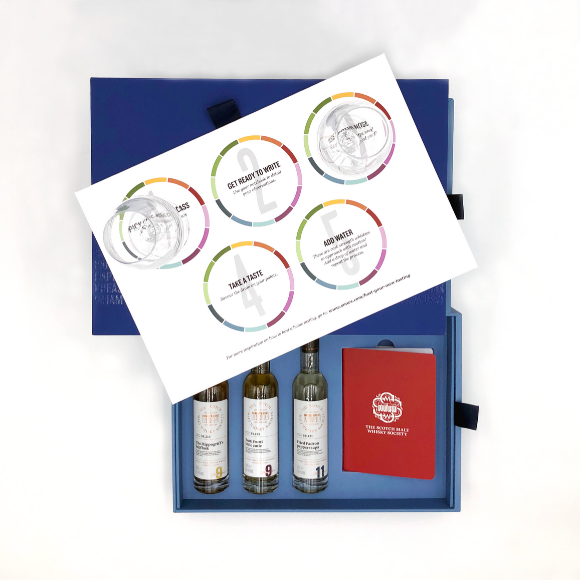Carsebridge
Carsebridge was born on 15th June 1798, when John Bald contracted with John Francis Erskine, Earl of Mar, to lease a "field near the Carse Bridge" along with the liberty of erecting houses and all other buildings, offices and machinery necessary for carrying on a distillery".
The annual rent was "seventeen Bolls and one firlot of good and sufficient Barley" and the same amount of wheat. Plentiful coal nearby, good water from Gartmorn Dam and closeness to Alloa harbour on the River Forth were some of the advantages of the site.
Carsebridge made malt whisky at first but switched to grain whisky production in 1850. The market for grain whisky was expanding due to the development of blends and by 1857 the Scottish output had reached 7,500,000 gallons, overtaking malt whisky production. A glut of grain whisky followed, undermining the price and viability of some of the distilleries. In 1877 a similar situation arose and for mutual protection six Lowland grain distilleries, including Carsebridge, amalgamated to form the Distillers Company Limited.
Alfred Barnard, visiting Carsebridge in 1886, admired its scale; "the works are very extensive, and cover altogether ten acres of ground". There were "thirteen pairs of stones" in the Mill, and in the tun room he saw "ranged, like opposing armies, twenty fine washbacks, of imposing size and capacity". The still-houses had "two elegant Coffey's patent stills" and the engine room had "14 engines, combining in all 400-horse power". At that time it was probably the second largest grain distillery in Scotland.
Barnard, typically, does more than just describe the equipment. He was particularly interested in a rookery nearby, having been told that the rooks arrived when the distillery converted from malt to grain; "at the time of our visit they were very busy, and holding a noisy parliament. The odours of whisky in the air had evidently loosened their tongues". The rooks can be seen in Barnard's illustration.
Barnard also commented on the fire precautions; e.g. each still separately housed with a giant cistern above, so that water could be deluged on any fire below. There was also a Shand & Mason fire engine and a trained fire brigade of 40 men.
Unfortunately, this did not stop the distillery being devastated by fire in 1902, at a cost of ??40,000 and nine months lost production. After the First World War, there was a major re-fit and by 1927 Carsebridge was also producing several hundred tons of yeast annually. An account from that year refers proudly to state-of-the-art electrical installations, a mechanical coal-handling plant, air-compressors, an automatic mash tun emptying system, a laboratory, extensive refrigeration facilities for yeast and a modern suction drying machine; "the machinery of the works is singing a merry industrial song all the day and night long", although the paper points out that "the day work in the yeast department is done by girls, but the night shifts are filled by men".
Yeast production ended at Carsebridge in 1938 and the distillery was modernised in 1956. In 1966 the floor maltings were removed to allow further expansion. The 1970s saw a new still house, a new cooperage and a new animal feedstuffs plant.
By 1980 it was the biggest grain distillery in Scotland with three Coffey stills. In 1983, the year of nemesis for many distilleries in the DCL group, Carsebridge was closed. In 1992 the distillery was demolished and now there is hardly any trace of the ten acres of buildings that once was Carsebridge.distillery being devastated by fire in 1902, at a cost of ??40,000 and nine months lost production.
After the First World War, there was a major re-fit and by 1927 Carsebridge was also producing several hundred tons of yeast
annually. An account from that year refers proudly to state-of-the-art electrical installations, a mechanical coal-handling plant, air-compressors, an automatic mash tun emptying system, a laboratory, extensive refrigeration facilities for yeast and a modern suction drying machine; "the machinery of the works is singing a merry industrial song all the day and night long", although the paper points out that "the day work in the yeast department is done by girls, but the night shifts are filled by men".
Yeast production ended at Carsebridge in 1938 and the distillery was modernised in 1956. In 1966 the floor maltings were removed to allow further expansion. The 1970s saw a new still house, a new cooperage and a new animal feedstuffs plant.
By 1980 it was the biggest grain distillery in Scotland with three Coffey stills. In 1983, the year of nemesis for many distilleries in the DCL group, Carsebridge was closed. In 1992 the distillery was demolished and now there is hardly any trace of the ten acres of buildings that once was Carsebridge.
All that remains is the occasional cask lying in warehouses around Scotland and they are sadly, becoming increasingly rare.

